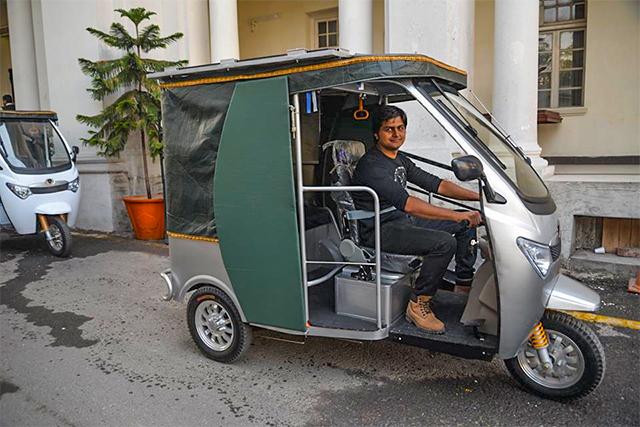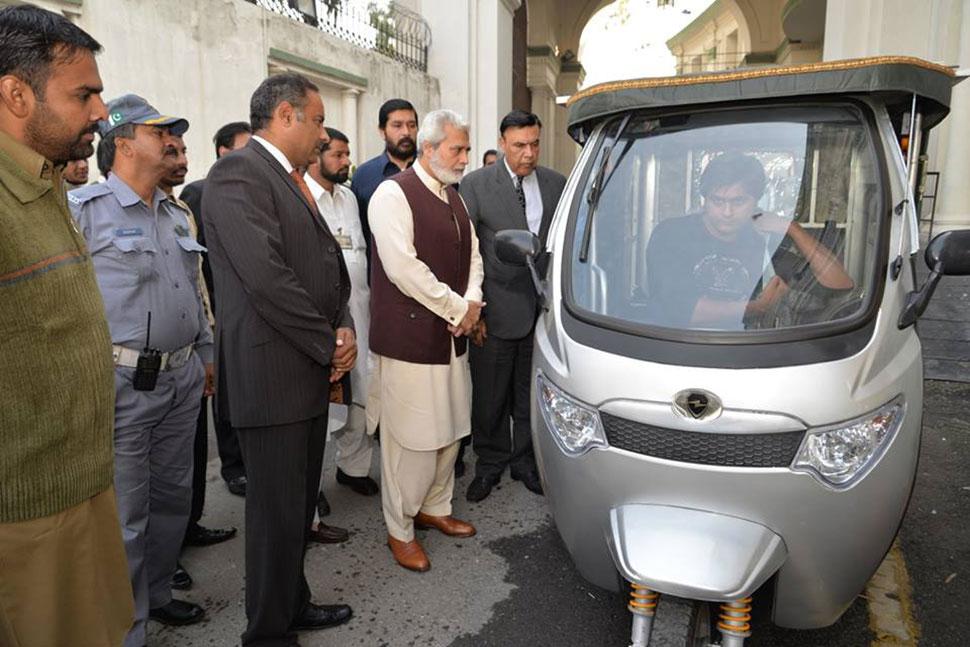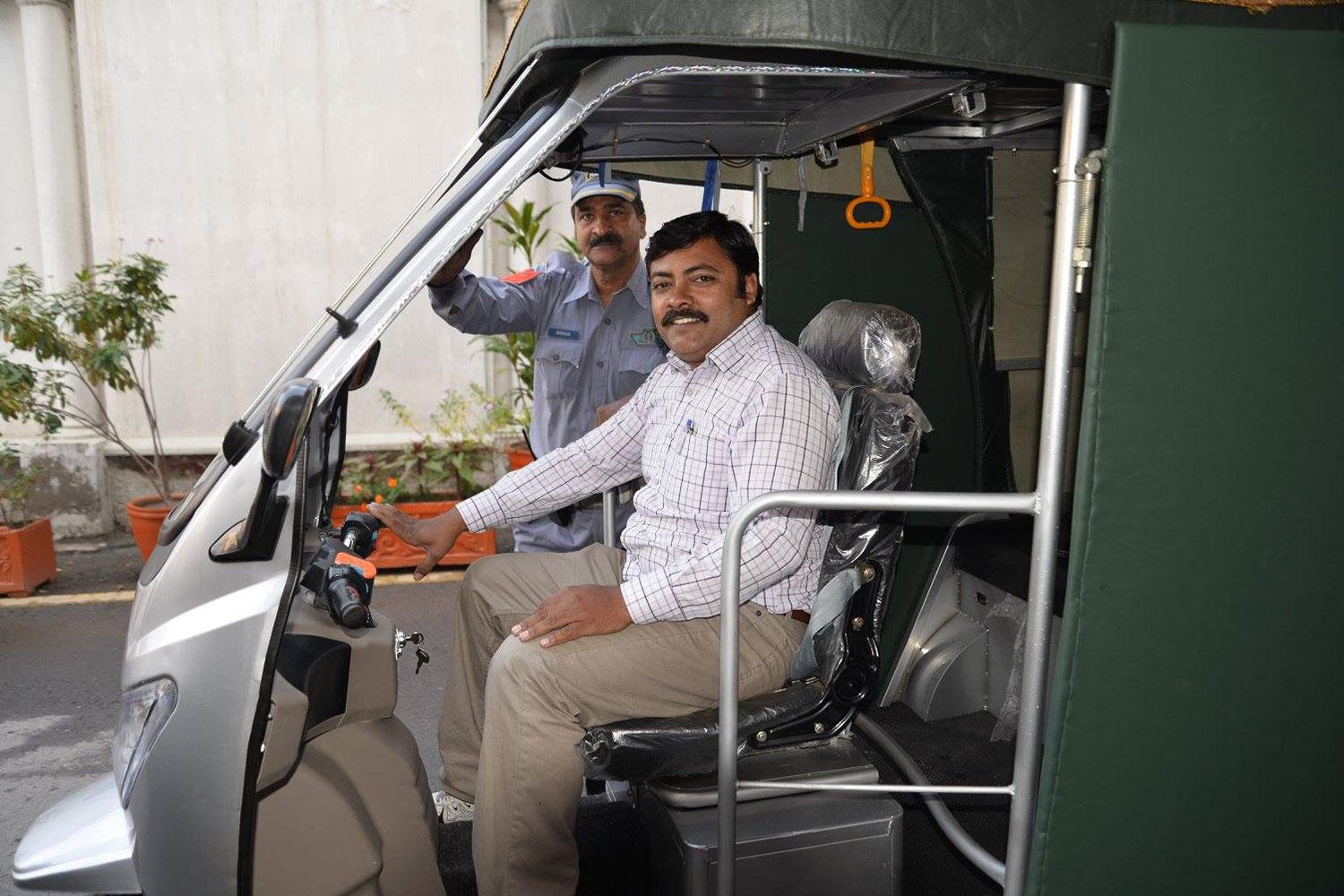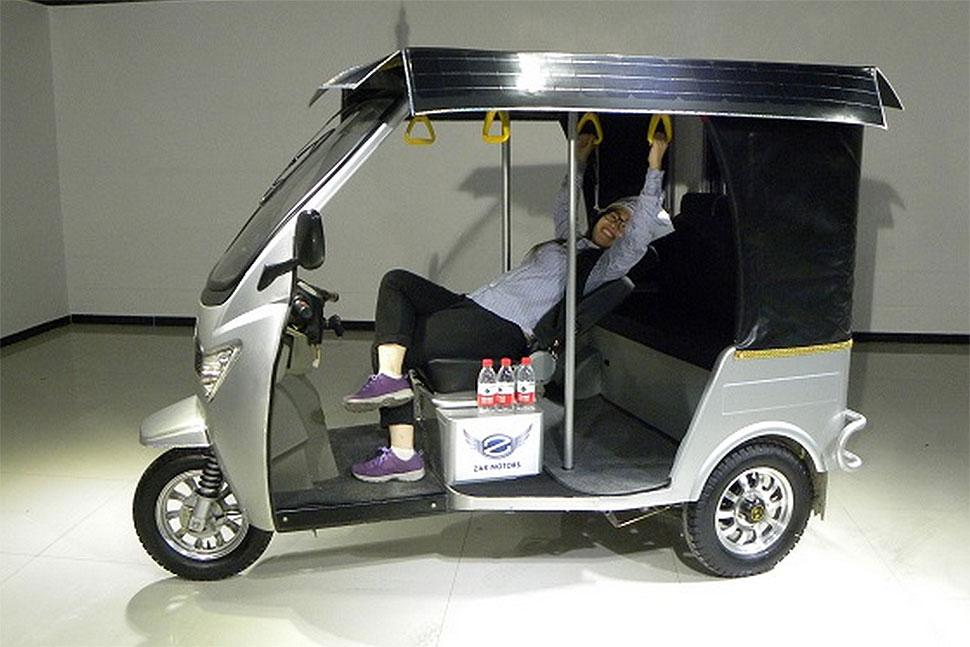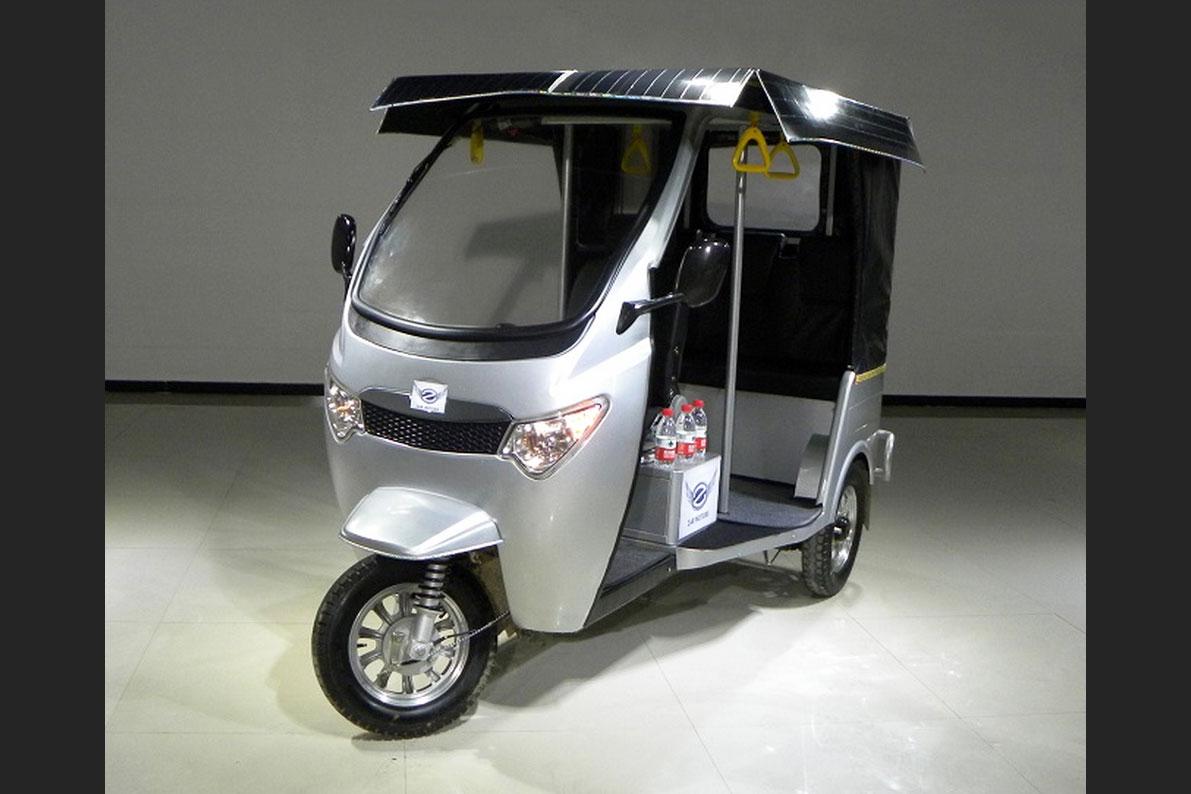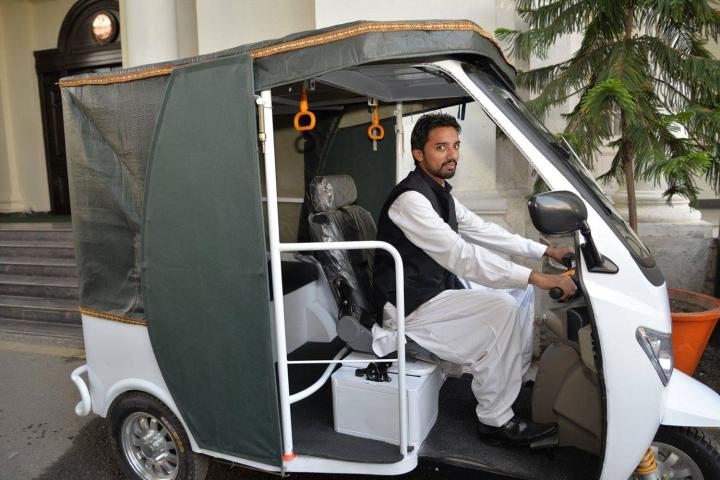
It looks a bit like a box fitted on a tricycle, a large windscreen placed above a single headlight that looks like it belongs on an early 1900’s Triumph motorcycle, some with flamboyant decorations called truck art. The cab’s capacity is for a driver and typically two passengers, three if they’re slim. But in Pakistan, it isn’t unusual to see five, maybe six in the back seat.
Combustion-engine rickshaws cost roughly $2,000, compared to $3,300 for an e-rickshaw.
They’re an undeniably practical way to zip to your destination in a jiffy – even in bumper-to-bumper jams — if you can tolerate the noise. On Pakistani streets, we measured rickshaws producing more than 100 decibels — the same noise level produced by a jet taking off. Plus there’s the visible black smoke sputtering from the exhaust, and accompanying carbon emissions. But people need to get around, and the third world isn’t known for its environmentally friendly approach.
Now a Japanese company, Zar Motors, has devised what it calls a solution to the noise and pollution problem: the E-Trike, an electric-powered rickshaw. Zar will begin domestically assembling and selling the vehicles in Pakistan after successful introductions in Mexico, India, Nepal, Sri Lanka, and Cambodia.
Instead of running on petroleum or on liquefied petroleum gas (LPG), the new Z5 model is powered solely by electricity. Seven hours plugged into a standard outlet provides enough juice for around 60 miles. In a hurry, a quick two-hour charge can deliver enough charge for just over 31 miles. Solar panels on its rooftop also provide some charging while on the move. The cab has a driver’s seat, and can carry up to three passengers with an option to extend the capacity, according to the company website. Amenities like two stylish headlights, a digital instrument cluster, cup holders, and a metallic paint job all set it apart from its clunky gasoline-powered predecessors. For cargo, Zar also makes an “A5” variant that can carry 1,650 lbs.
But this is surely no Tesla Model S. While the old rickshaws can hit a speed of 50 mph, the evolved or e-rickshaw, as we like to call it, can only attain half that speed.
“These rickshaws are really slow. When you are riding it, even old bangers would drive past you. You are like the turtle in a race,” said Ghufran, a Lahore-based student who uses public transport to commute.
Then there is the price difference. Combustion-engine rickshaws cost roughly $2,000, compared to $3,300 for an e-rickshaw. Buyers, already cautious of investing in relatively untested vehicles, are discouraged by the price tag.
Seven hours plugged into a standard outlet provides enough juice for around 60 miles.
“Being able to save on fuel is great. But the price difference is substantial. I also don’t know if the overall running cost would be including the spare parts,” argued Haji Iqbal, an older rickshaw driver in Lahore.
But the company says it is worth it.
“The higher initial cost is covered within 14 months through the lower running cost of this rickshaw”, says Awais Qureshi, CEO of Zar Motors. “That is a very small time period, and people can afford it.”
The manufacturer also claims to have overcome another challenge: In monsoon season, improper drainage systems in many parts of the country leave flooded streets that look more like the canals of Venice, Italy. So can it float like a boat? Not even close. It has a waterproof power unit and wiring, allowing it to run through a couple of feet of water without stalling, due to the absence of an air intake or exhaust.
But there is skepticism.
“Looking at the specifications, one the vehicle is too slow. Secondly, the electric-powered engine will not produce the sort of power required to carry around the load on some of the steep roads in the country. It is nice to see environment-friendly vehicles, but we need work done too,” said Anis-ur-Rahman, a mechanical engineer.
The company’s CEO argues otherwise.
“We have tested the rickshaws,” Qureshi insists. “[They will rival the old design] and rest assured they will not roll back when climbing a steep road.”
Copyright 2015. Provided exclusively by Eastern TV News to Digital Trends. All rights reserved.
Editors' Recommendations
- Big EVs are almost here: 7 upcoming electric SUVs we’re excited for
- Tesla recalls electric Semi truck just months after launch
- VinFast’s new electric cars will be available in the U.S. this year
- Are EVs more expensive than gas cars? It’s complicated
- Tesla’s electric Semi truck coming sooner than expected

